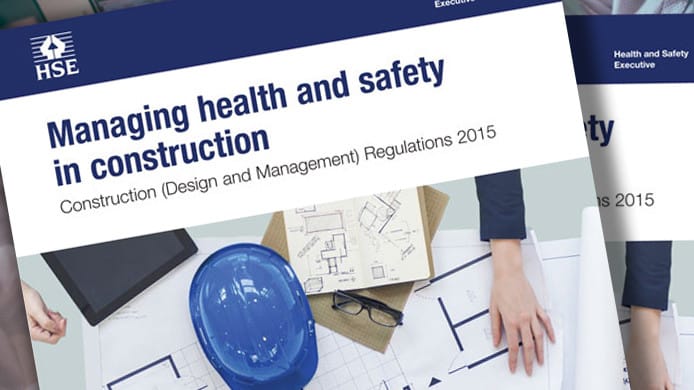
The Construction Design and Management Regulation or CDM has been around now for over 22 years in some shape or form and in that time has been subject to changes along the way. The most recent revision of the Regulations came into force in April 2015 (CDM15).
The removal of the role of the CDM Co-ordinator to make way for that of the Principal Designer was one of the biggest change to this latest revision. CDM15 is the legislation that applies to all construction projects, from feasibility study to final handover and beyond. The CDM Regulations are in place to reduce the risk of harm to those who not only build and maintain structures, but to those that have to use the structure, right up to when the building is demolished.
CDM15 applies to both domestic and commercial building sites, large and small, put simply, unless it is a DIY job, then this law will probably apply as a result. The health and safety responsibilities should be treated as normal a part of the construction process as mixing cement. No matter what the size of your project, consideration for health and safety should be part of the planning process, not something that is reluctantly snapped on just before the building starts.
It doesn’t have to be about creating mountains of paperwork and unnecessary processes; Safer Sphere can assist with ensuring CDM compliance. We will work together with clients and designers to promote health and safety throughout the project, manage your compliance efficiently, and ensure adequately trained individuals are appointed to propel the project forward. Complying with CDM 2015 does not have to cause you concern, instead, it will help ensure that no one is harmed during construction and that the structure is safe to use and easy to maintain. Effective planning will also help ensure that your work is well managed with fewer unexpected costs and problems.
Companies that have kept abreast of the changes to the regulations are improving standards within the construction industry all the time. Nearly three years have passed since the requirements of CDM were revised in 2015, and there are companies that have not had the resources available within their own organisation to enjoy the benefits of having competent, professional, and holistic Construction Health & Safety Solutions available to them. In addition, many homeowners will still be unaware of the regulations at all, never mind their own responsibilities.
Domestic clients were omitted from the Regulations before the 2015 revisions, since then if a domestic project has more than one contractor working simultaneously, a “Principal Contractor” and “Principal Designer” must be appointed just like on a commercial site. Size is not important before any project starts, the Principal Designer will be responsible for ensuring the client understands their responsibilities under CDM15 and for preparing and sharing the pre-construction information with the appointed designers and contractors.
The Principal Contractor must prepare a construction phase plan before any physical work begins. The Principal Contractor is also responsible for undertaking worker site inductions, ensuring that adequate welfare and sanitation facilities are provided, and securing the site against the public. Whether you are having building work carried out on your behalf (client), as a domestic client, Principal Contractor, Designer, Sub-Contractor, appointed as another duty holder, or a site worker, then you will have to consider your health and safety responsibilities under CDM15 before a spade is put in the ground.
In order to comply with this law, projects should be carried out with health and safety in mind.
To discuss any project with Safer Sphere, please don’t hesitate to contact us at marketing@safersphere.co.uk